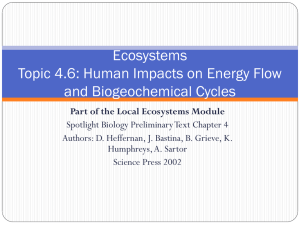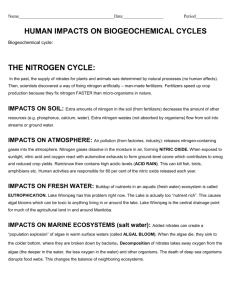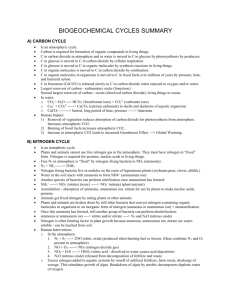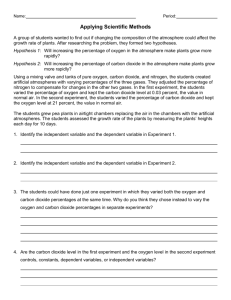Human Impact 2015
advertisement
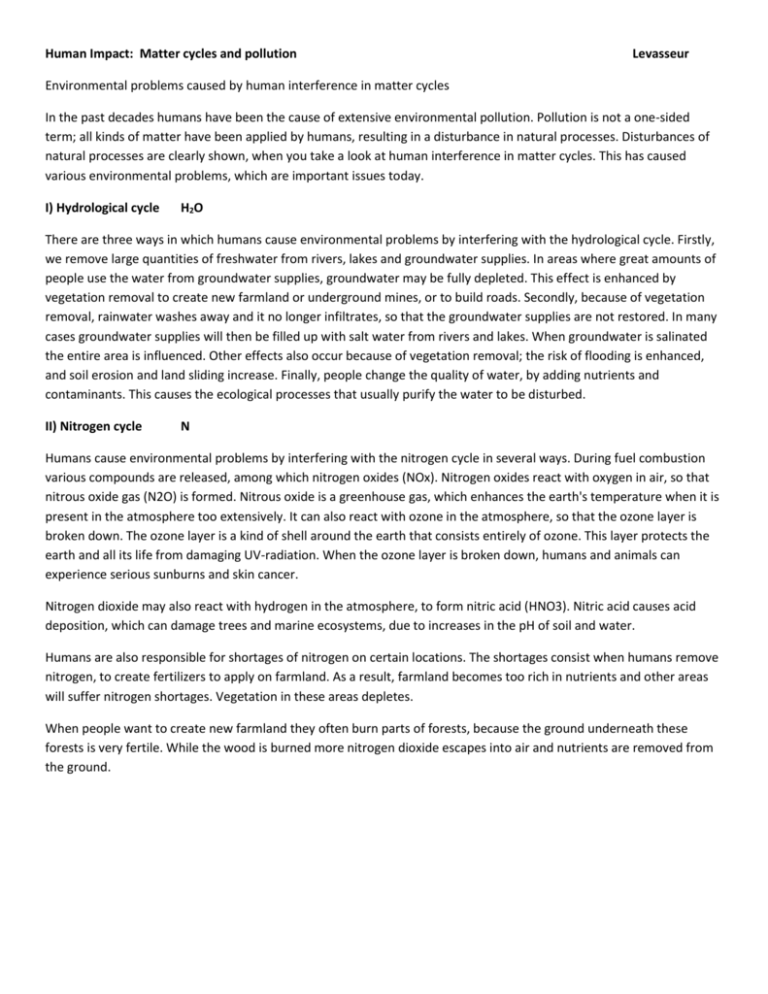
Human Impact: Matter cycles and pollution Levasseur Environmental problems caused by human interference in matter cycles In the past decades humans have been the cause of extensive environmental pollution. Pollution is not a one-sided term; all kinds of matter have been applied by humans, resulting in a disturbance in natural processes. Disturbances of natural processes are clearly shown, when you take a look at human interference in matter cycles. This has caused various environmental problems, which are important issues today. I) Hydrological cycle H2O There are three ways in which humans cause environmental problems by interfering with the hydrological cycle. Firstly, we remove large quantities of freshwater from rivers, lakes and groundwater supplies. In areas where great amounts of people use the water from groundwater supplies, groundwater may be fully depleted. This effect is enhanced by vegetation removal to create new farmland or underground mines, or to build roads. Secondly, because of vegetation removal, rainwater washes away and it no longer infiltrates, so that the groundwater supplies are not restored. In many cases groundwater supplies will then be filled up with salt water from rivers and lakes. When groundwater is salinated the entire area is influenced. Other effects also occur because of vegetation removal; the risk of flooding is enhanced, and soil erosion and land sliding increase. Finally, people change the quality of water, by adding nutrients and contaminants. This causes the ecological processes that usually purify the water to be disturbed. II) Nitrogen cycle N Humans cause environmental problems by interfering with the nitrogen cycle in several ways. During fuel combustion various compounds are released, among which nitrogen oxides (NOx). Nitrogen oxides react with oxygen in air, so that nitrous oxide gas (N2O) is formed. Nitrous oxide is a greenhouse gas, which enhances the earth's temperature when it is present in the atmosphere too extensively. It can also react with ozone in the atmosphere, so that the ozone layer is broken down. The ozone layer is a kind of shell around the earth that consists entirely of ozone. This layer protects the earth and all its life from damaging UV-radiation. When the ozone layer is broken down, humans and animals can experience serious sunburns and skin cancer. Nitrogen dioxide may also react with hydrogen in the atmosphere, to form nitric acid (HNO3). Nitric acid causes acid deposition, which can damage trees and marine ecosystems, due to increases in the pH of soil and water. Humans are also responsible for shortages of nitrogen on certain locations. The shortages consist when humans remove nitrogen, to create fertilizers to apply on farmland. As a result, farmland becomes too rich in nutrients and other areas will suffer nitrogen shortages. Vegetation in these areas depletes. When people want to create new farmland they often burn parts of forests, because the ground underneath these forests is very fertile. While the wood is burned more nitrogen dioxide escapes into air and nutrients are removed from the ground. III) Phosphorus cycle P Humans also cause environmental problems by interfering with the phosphorus cycle. We remove phosphates on certain locations, to apply it on farmland as fertilizers. On these locations the phosphate supply is moving, causing phosphate levels of surrounding land-soils and groundwater to become too high. On farmland where phosphates are applied as fertilizers, plants do not absorb all phosphate. The phosphates end up in water and stream towards lakes and reservoirs, where they cause a phenomenon called eutrophication. Eutrophication means that the water is so rich in nutrients that it causes certain water plants, such as green algae, to grow extensively. As a result the oxygen supply in the water depletes, causing fish and other oxygen-dependent organisms to die and bacteria that are not oxygen dependent (anaerobic) to take over. When people practice extensive wood chopping in forest areas, such as the tropical rain forest, phosphate supplies deplete, because most of the phosphate can be found in the ground under the trees in such areas. When the trees are removed the rain washes phosphates away, causing the ground to become unproductive. Phosphate supplies are restored very slowly, because most phosphate in soils and water comes from weathering rocks and oceanic sediments. V) Carbon cycle C Humans cause environmental problems by influencing the carbon cycle in two ways. Firstly, deforestation has caused depletion in plants and trees that absorb carbon dioxide. Humans cause great carbon emissions to the atmosphere which take place during industrial processes, such as coal and oil combustion. These processes serve the generation of energy. As a result of these effects the carbon dioxide levels in the atmosphere have greatly increased. Between 1870 and 1990 the carbon dioxide emissions to air have increased 25%. The carbon dioxide levels in air are now so high, that the uptake by plants and oceans is not fast enough. Carbon dioxide is a greenhouse gas. This means that increasing carbon dioxide levels in air support the greenhouse effect. The greenhouse effect is a term that is used for climate change on earth, caused by greenhouse gases in the atmosphere. Too much carbon dioxide in the atmosphere can cause the earth to warm up. This will in time cause all kinds of negative effects, such as melting of ice from the Arctic causing floods on other continents. Secondly, during the industrial revolution humans have used fossil fuels extensively for energy generation, as has been mentioned before. Because fossil fuels consist of dead organic matter it takes a very long time to restore the supplies. Because humans have been burning fossil fuels extensively over the past decades fossil fuel supplies are in danger of being exhausted.


